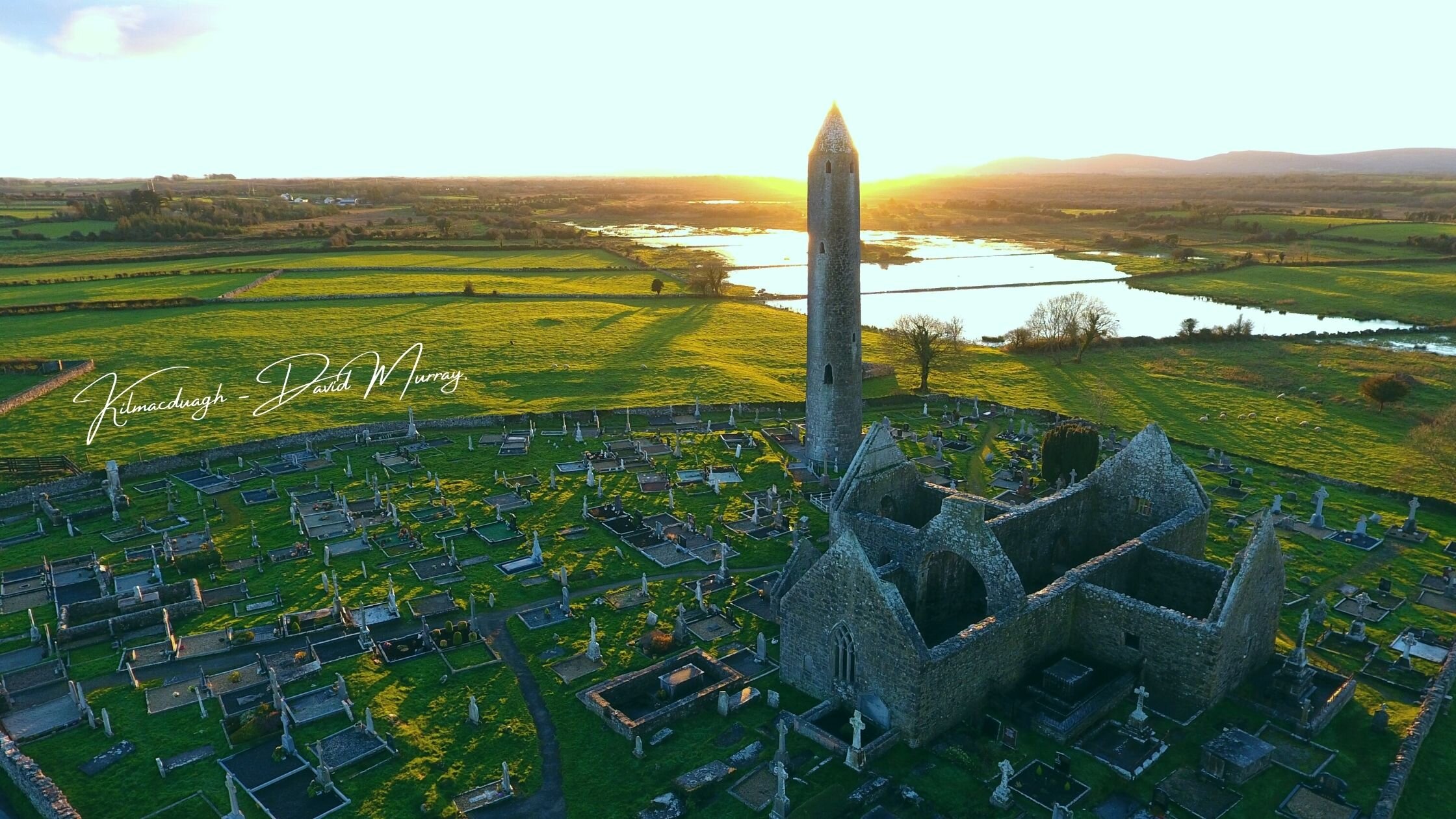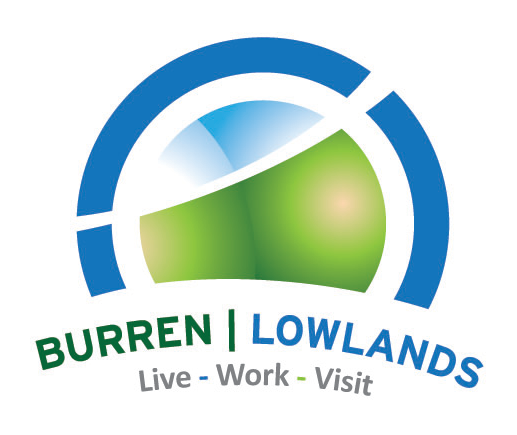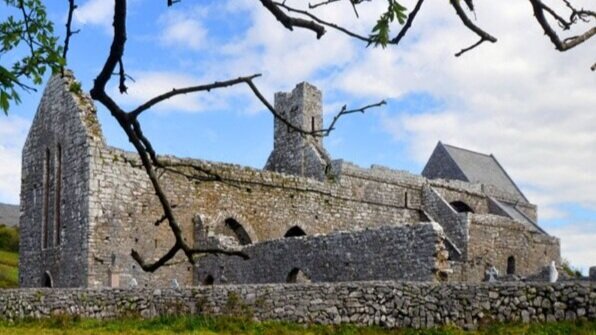
What To See
The Burren Lowlands is blessed with an abundance of interesting sites to see. While you are visiting, don’t leave without checking out the following:
Ireland’s tallest 12th Century Tower at Kilmacduagh and many other ancient castles and monuments are scattered around the landscape. Explore Coole Park Nature Reserve, where turloughs rise and disappear throughout the year.
Visit Kiltartan Gregory Museum and learn about Lady Gregory, her life at her Coole home, her visitors, including Edward Martyn of Tulira Castle (now a private residence), and her involvement in the Irish Celtic Revival of the early 20th century.
Visit Thoor Ballylee and use Great Visitor Experiences for a guided tour as you explore the Tower, the home of one of Ireland’s finest poets, W.B. Yeats.
Enjoy the Woodville Walled Garden, a favourite of Lady Gregory’s. Visit Kinvara, a colourful coastal town guarded over by the spectacular Dunguaire Castle.
From yesteryear to today, there is something for everyone in this region!
Photo Credit: Thoor Ballylee, Luis De Morais for Burren Lowlands Photo Contest
Annual Events
When planning your trip, consider our yearly festivals! We Irish have a reputation for loving a good party & enjoying the craic! Steeped in a colourful history of music, song, dance, and literature that has transcended generations, mixing old & new, we use any excuse to enjoy life! Come into the heart of the Burren Lowlands, where the call of the cuckoo in May signals the start of summer and some amazing festivals that run throughout the year.
This is Kieran Collins, Cooley-Collins Festival
To celebrate the living tradition of the beautiful Galway Hookers, legendary turf boats once the workhorses of the coast of Connemara and North Clare, Cruinniu na mBad and Fleadh na gCuach festivals will have you returning year after year to enjoy the craic, ceol (Irish music) & culture in Kinvara. Showcasing the best in traditional music, Gort’s Cooley Collins festival ensures generations of musicians are given the opportunity to display their musical & vocal talents by attracting musicians from all over Ireland and further afield. Both Gort and Kinvara offer annual St Patrick’s Day parades, to which everyone is invited.
If you want culture, look no farther than Coole Park for the annual Autumn Gathering to discuss Lady Gregory and W.B. Yeats’ lingering influence on Irish literature and drama.
These events are open to all, so check their websites and join us during your holiday!
In Gort and Beyond
There is so much to see in the region that to highlight every single point of interest is nigh on impossible! In addition to our major sites referenced above, we hope the small sample of historical buildings and artefacts listed below further enhance your journey and understanding of the Burren Lowlands while you are here. Begin your explorations in Gort with our Gort Town Trail map!
Photo Credit: St Colmans Catholic Church, Gort - Bernice Forde Carolan
St Colman’s Church- Gort
When the Penal Laws were relaxed, Lord Gort donated land at a peppercorn rent for Gort’s Catholic Church. Originally built in 1825 by the Pain brothers, it was modified and enlarged many times in the following years. Priest historian Monsignor Jerome Fahy joked with Lady Gregory that its spire was higher than that of the nearby Protestant Church. “What does it matter,” she replied, “as long as they both point in the right direction?”
The Library and Cemetery - Gort
The Gort Library is housed in the former Protestant Church, built in 1810. The design was attributed to the architect Pain. Prominent families reserved the two galleries, the north for the Gregorys and the south for the Goughs. The building was given to Gort town in 1972. The cemetery has several 17th century box tombs. In the newer part, donated by the Sisters of Mercy, are beautiful Stations of the Cross.
Photo: Gort Town Hall, Art by Mavis Gormally
The Town Hall- Gort
Built in 1847 as a National (or Irish primary) school, it helped the illiteracy rate fall from 53% in 1841 to 16% in 1890. Now used by community groups, including the Wild Swans drama troupe, the building is undergoing renovations for 21st century needs.
The Convent (Bridge House) - Gort
Dating from the 1760s, this was originally the home of Lord Gort and is probably the oldest inhabited building in town. At various stages it was a doctor’s residence, a police barracks, and an auxiliary workhouse during the Famine. The Sisters of Mercy came to Gort in 1857, led by Sr Aloysius Doyle, a veteran of the Crimean war, and the convent remained there until 2021, when it was finally closed.
The Weigh House - Gort
This dates from c 1760. The weekly market was held in the Square on Saturday, probably from O'Shaughnessy times, from the 18th century. People came from all over the present Burren Lowlands area. Produce was weighed to make sure that people paid their tolls. In the early 19th century, it would have been 3 pence for a barrel of oats or a penny a stone for potatoes. The Weigh Master would mark the weight of the item on the seller's hat. The weigh house went out of use c1950 and is now owned by An Taisce and is our tourist office. The square itself is now a triangle and the houses on the Church side once faced the river so what we see today are the backs of the houses.
The Old Fever Hospital- Gort
Established in 1846, the Tudor style is typical of workhouses designed by architect George Wilkinson. Located adjacent to the Gort Workhouse, the fever hospital was built to deal with epidemics brought on by the Famine. Built for about 150 people, the numbers shot up to 450 and fever sheds had to be added. Today, in the grounds, is the workshop of local stonemason Jethro Sheen. It is well worth a visit to this gifted craftsman's showroom.
The Old Forge- Gort
A plaque on the small Forge on Georges St echoes the text W.B. Yeats had erected on his tower house at Thoor Ballylee, mentioning “smithy work from the Gort Forge”. Built in 1800 and still in operation until the 1960s, W.B. got his horses shod there.
The Railway Station- Gort
Opened in 1869 after a series of financial setbacks, Thomas Lawlor was the first station master. It claims to be the first line in Ireland to carry third class passengers. The railway brought prosperity and employment to Gort. Railway cottages were built, and tenants manned the crossings. People wishing to cross at night had to obtain a key for the gates from the tenant. In the 1970s the line was closed but reopened in 2010 as part of the Western Rail Corridor.
The Old Military Barracks - Gort
Now Honan’s warehouse, this was built on the site of Gort Castle, destroyed by Cromwell’s forces about 1650. Sir Roger O’Shaughnessy, the last Irish chief to reside in Gort was deposed and his sone joined the Wild Geese in France. Today, the old Cavalry Barracks of the British is still in good condition. Treasures of the past can be found in the Aladdin’s cave of Honan’s antiques. The Gort Garda HQ is located across the street.
KINVARA
KAVA , Kinvara Area Visual Arts , is a community arts group based in Kinvara to promote the visual arts and the artist. It is sited in the Kinvara courthouse, a Georgian building dating from 1840.
From the 1860s it was used as a performance space as well as at Court. The poet and songwriter Francis Fahy, (Galway Bay was one of his songs) was born in Kinvara and produced his first play ‘The Last of the O’Learys’ in the Courthouse. Today it is used for seminars, exhibitions, and workshops for local artists.
The Kinvara Mill is a two-stage windmill built in c.1790. It is now ruinous and roofless with no internal fittings. Nonetheless, the structures walls are still in very good condition and have stood the test of time.
Burren Nature Sanctuary is a wonderful introduction to this magical landscape with its unique flora and fauna. Set on a 50-acre organic farm featuring Burren habitats which showcase the flora in its natural setting: shattered limestone pavement, calcareous orchid-rich grassland, ash, and hazel woodland and a unique tidal, freshwater turlough.
The dome-shaped Botany Bubble is home to the National Collection of Burren Flora in season.
Photo: Burren Nature Sanctuary
ARDRAHAN
The Bingham Mausoleum was erected to house the remains for John Charles Robert Bingham (4th Baron Clanmorris) who died in 1876.
His wife and brother were also buried here, and all were removed in 1945 for reburial in Ardrahan.
The cut-stone appearance and detailing are well executed and provide a contrast to the rubble stone walling of the medieval church in ruins.
Other sites in Ardrahan include the Market Square, Drumharsna Castle, Lydacan Castle, CastleTaylor House, and Ballymaquiff Castle.
Photo: Katleen Bell-Bonjean
BALLINDERREEN
A Gothic inspired mausoleum in Drumacoo Cemetery, St George Mausoleum was built for the Lady Harriet St George by her husband Arthur F. St George, the occupants of nearby Tyrone House and Kilcolgan Castle.
The mausoleum is referred to by the English poet laureate Sir John Betjeman in his poem ‘Ireland with Emily’.
Photo: Katleen Bell-Bonjean
BEAGH
Ardamullivan Castle, a restored tower house of six storeys, stands on a narrow rock outcrop above woodland at the end of a laneway off the main N18 road.
There is no date for when it was built, but in 1579 it was the cause of the deaths of Dermot O'Shaughnessy and his nephew John, who fought and killed each other in a dispute over possession of the castle.
Photo: Bernice Forde Carolan
CARRAN
The Michael Cusack Centre in Carran is a visitor centre dedicated to the memory of the founder of the GAA – Michael Cusack. Look around the famine era cottage, with a fascinating audio visual that guides you through conditions in rural Ireland in famine times. It also explains how the GAA was founded as well as Michael Cusack’s role in the revival of Celtic games. Other sites include Temple Cronan, founded here by St Cronan in the early 7th century. The small medieval oratory was built of large blocks of limestone. The church at the site may be pre-12th century with Romanesque decoration added during that century. Also visit Caherconnell Burren UNESCO Park.
Photo: Geraldine Ruane
CASTLEDALY
Castledaly House and Mausoleum, privately owned and not open to the public, is now a ghostly ruin, long since abandoned to the elements. It sits on a superbly elevated site, overlooking what was once the lands and demesne of the Daly family and indeed appears to be literally still watching over St. Theresa’s church, which the family helped build for the community of the area in the 1850s. The Daly mausoleum (built in the 1860s) stands pride of place to the front of the church.
Photo: Irish Country Houses, Facebook
CRUSHEEN
Inchicronan Priory is an early monastic site, possibly founded 6th century.
It became a parish church in 1302 AD but was dissolved c.1543 by Henry VIII.
It was restored and in use by friars in the reign of Elizabeth 1st and became a parish church again in 1615 under the Earl of Thomond.
Photo: John Armagh
DERRYBRIEN
Near one of the entrances to the nearby Derrybrien Windfarms is The Earl’s Chair - a rock formation that was used by the local gentry as a resting place when hunting nearby. It is said that this may also be one of the earliest coronation sites in Connacht.
Photo: Margaret Slattery, Facebook
KILBEACANTY
A King George Postbox can be found in Kilbeacanty. It is a royal cipher of G R. George Rex (King George in Latin) with the crown between the G and R. This signifies that it was made during the reign of King George V 1910 -1936.
You can read the words Post Office on the aperture. It would originally have been red and made of cast iron but with the formation of the Free State they were painted green. These King George V postboxes are rare in Ireland.
Photo: Kilbeacanty Facebook
KILCHREEST
Woodville House Walled Garden is set near Kilchreest, at the foot of the Slieve Aughty Mountains. A visit to the garden takes guests back to the 18th century, as it was once home to prominent Galway families. Harry Persse, brother to Lady Augusta Gregory, also resided at Woodville at the beginning of the last century. Though privately owned, Cloughan Castle is not to be passed by, while the Lady Gregory/Yeats Trail with a walk to the nearby Roxborough Gates, will let you stretch your legs after a day of driving.
Photo: ladygregoryyeatstrail.com
KILTARTAN
Castletown Castle is a 13th Century ruin on the banks of the Gort River near Kiltartan. Built c 1280 all that remains is a much-ruined de Burgo castle and bawn thanks to the work of Cromwell’s artillery in the 1650’s.
It is said that Lady Gregory loved this place and more information on her life & times in the area can be found at the Kiltartan Gregory Museum nearby.
Photo: kiltartangregorymuseum.org
NEW QUAY
Near New Quay, a late 12th century Cistercian Abbey, Corcomroe Abbey, is said to be built of local limestone by Donal Mór Ua Briain. The church is cruciform in plan although the north and south transepts are short.
The roof above the choir contains rib vaulting while the capitals on the columns are finely carved with leaves, masks, and dragon heads. On the floor are grave slabs and the presbytery is one of the most refined pieces of architecture of that era.
Photo: Irelandxo.com
PETERSWELL
Rahally Castle is a tower house built by the De Burgo (Burke) family. The castle was uninhabited for many years and has undergone significant restoration work.
It is home to a range of interesting tapestries from around the world however Rahally Castle is a private residence and not open to the public. Also in Peterswell is Cooley Hall, steeped in musical history, named after the famous late musician Joe Cooley in whose honour the annual Cooley Collins Trad fest is held every year.
Photo: Katleen Bell-Bonjean
TIERNEEVIN
Tierneevin Church was built in 1856 by Fr. T. Shannon P.P., Gort. The beautiful stained glass windows are unusual as each offers a different style representing a period of Gothic architecture.
They are worthy of scrutiny to identify the three pet companions of St Colman, who lived in nearby Kilmacduagh - his pet rooster who served as an alarm clock , a mouse that nibbled his ear to ensure he got up for prayer and a fly that acted as a bookmark when reading his manuscripts!!!
Photo: Tierneevin Facebook
TUBBER
Fidduan Castle was inhabited by the O’Shaughnessy family until 1727.
Now an empty six storey well-preserved tower house in Tubber, it was built around 1574.
Once noted to be the largest castle in Ireland due to the acreage its outer walls occupied.
Maintained by the Dept. of Public Works, keys can be obtained from landowners and a short hike through the fields is worthwhile to find this hidden gem.
Photo: Rory O’Shaughnessy





















